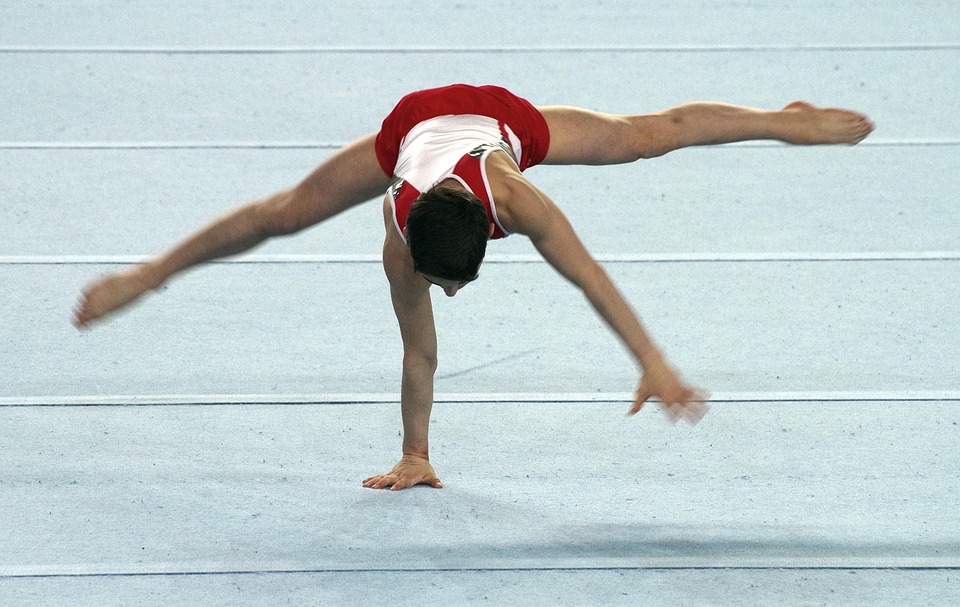Gymnastics is often seen as a sport reserved for the gifted and the talented. However, behind every Olympic medal winner lies a journey filled with dedication, sacrifice, and an unyielding passion for the sport. The transition from a toddler exploring the gymnastics mat to an Olympian performing under the brightest lights is a fascinating narrative that encompasses physical training, mental fortitude, and unwavering support systems.
Early Beginnings: The Spark
For many gymnasts, the journey begins at an age when most children are just learning to walk. Classes for toddlers usually focus on fundamental motor skills and basic coordination. It’s often in these playful, exploratory environments that a child’s love for gymnastics is ignited. Through activities like tumbling, balance beam fun, and mini-trampoline jumps, toddlers discover the joy of movement.
At this stage, gymnastics serves not only as a physical outlet but also as a platform for social interaction and emotional development. Qualified coaches instill confidence in young children, allowing them to experiment with their bodies in a safe environment. Many children are drawn to the sport’s colorful leotards, thrilling flips, and the cheers from their peers.
The Foundation Years: Training and Skill Development
As they progress into their elementary years, serious training begins. This period often involves rigorous schedules that can include several hours of practice several days a week. Coaches identify potential talents and work on developing specific skills. Here, the emphasis shifts from fun to discipline.
Precision becomes key as gymnasts begin to learn the intricate techniques required for various events: vault, uneven bars, balance beam, and floor exercises. Flexibility, strength, and artistic expression are nurtured, with gymnasts spending hours perfecting their routines, often pushing past physical and mental barriers.
Moreover, the involvement of parents becomes crucial during this phase. Their support, whether attending meets, providing transportation, or simply cheering from the stands, can significantly impact a child’s commitment and performance.
The Competitive Edge: Rising Through the Ranks
Once a gymnast reaches the pre-teen years, competitions become a central focus. Local competitions lead to qualifying for state, regional, and eventually national events. This competitive environment introduces another layer of pressure, where gymnasts must cope with the highs of success and the experience of failure.
Coaches play a critical role in this phase, helping gymnasts develop not only their physical skills but also their mental resilience. The mindset of a competitor is cultivated, emphasizing goals, visualization techniques, and stress management strategies.
The balance between training and academics becomes increasingly difficult to maintain, with many young gymnasts experiencing the challenge of juggling school, homework, and practice schedules. Family dynamics are often tested as members rally around their aspiring athletes.
The Path to Elite Status: Trials and Triumphs
Entering the teen years is often a turning point for aspiring gymnasts. Many dream of representing their country in the Olympics, leading to even more rigorous training regimens. Elite programs demand full commitment, often requiring gymnasts to train multiple hours each day while also potentially relocating to train with specialized coaches and teams.
In this high-stakes environment, injuries and setbacks are common. Gymnasts must learn to navigate the emotional rollercoaster of their sport, dealing with fears and pressures that can be overwhelming. Mentorship, both from coaches and seasoned athletes, guides young gymnasts through the turbulent waters of elite competition.
The Olympic Dream: The Ultimate Goal
For a select few, the dream culminates in qualifying for the Olympics. This achievement is not just about talent; it involves years of dedication, sacrifices, and sheer grit. Pre-Olympic training can be grueling, often including altitude training, mental conditioning, and a focus on nutrition and recovery.
As the competition draws near, gymnasts must find a way to channel their nerves into performance. The experience of competing on such a grand scale can be exhilarating yet terrifying. Olympians must learn to embrace the moment while remaining grounded, often drawing from their training and experience to perform at their best.
Legacy of a Journey
The journey from toddler to Olympian in gymnastics is one of immense challenges, learning, and personal growth. While only a few may reach the pinnacle of athletic success, the life lessons learned along the way are invaluable. Resilience, discipline, and self-discovery shape their identity, creating individuals who often excel in various facets of life beyond gymnastics.
Ultimately, whether they achieve Olympic glory or not, these athletes build a legacy of hard work, determination, and inspiration for the next generation. Their stories encourage young athletes everywhere to dream big, work hard, and enjoy the endless possibilities that gymnastics – and sport – can offer.



